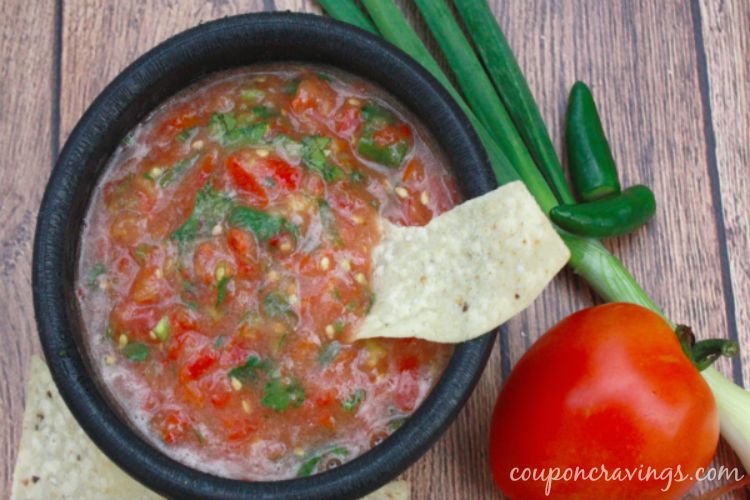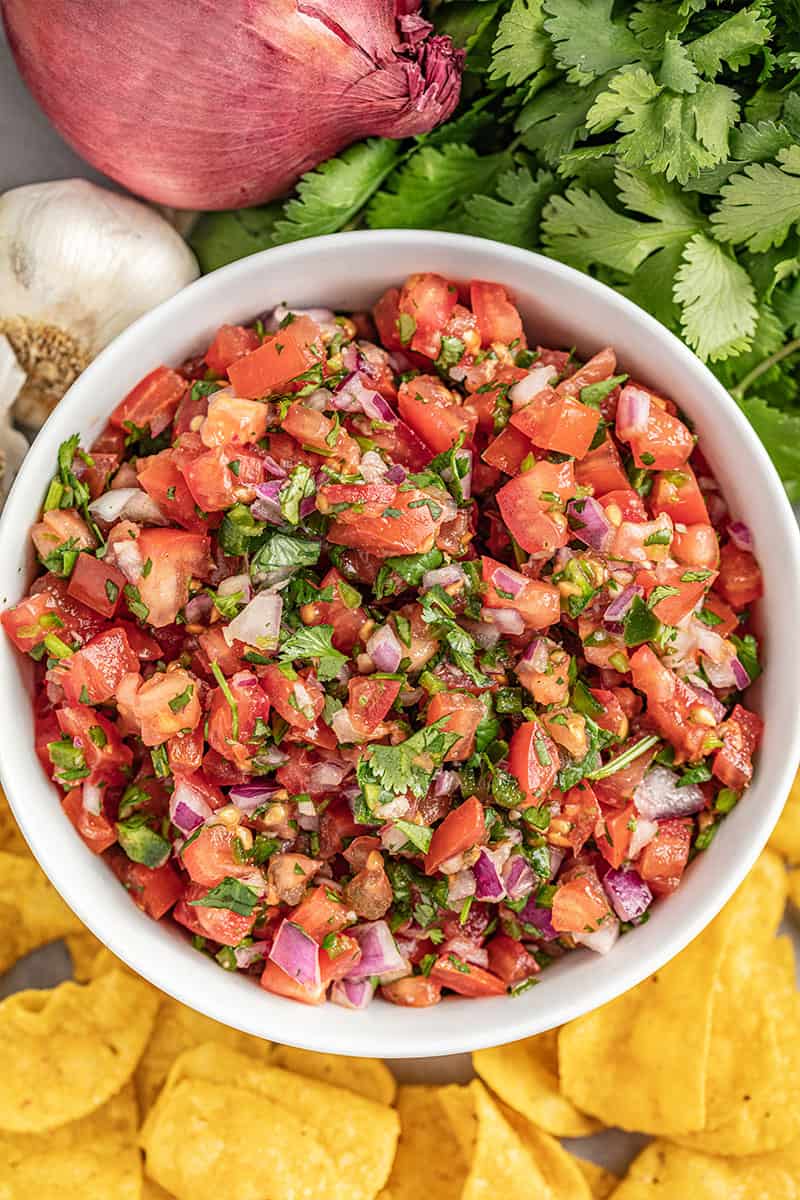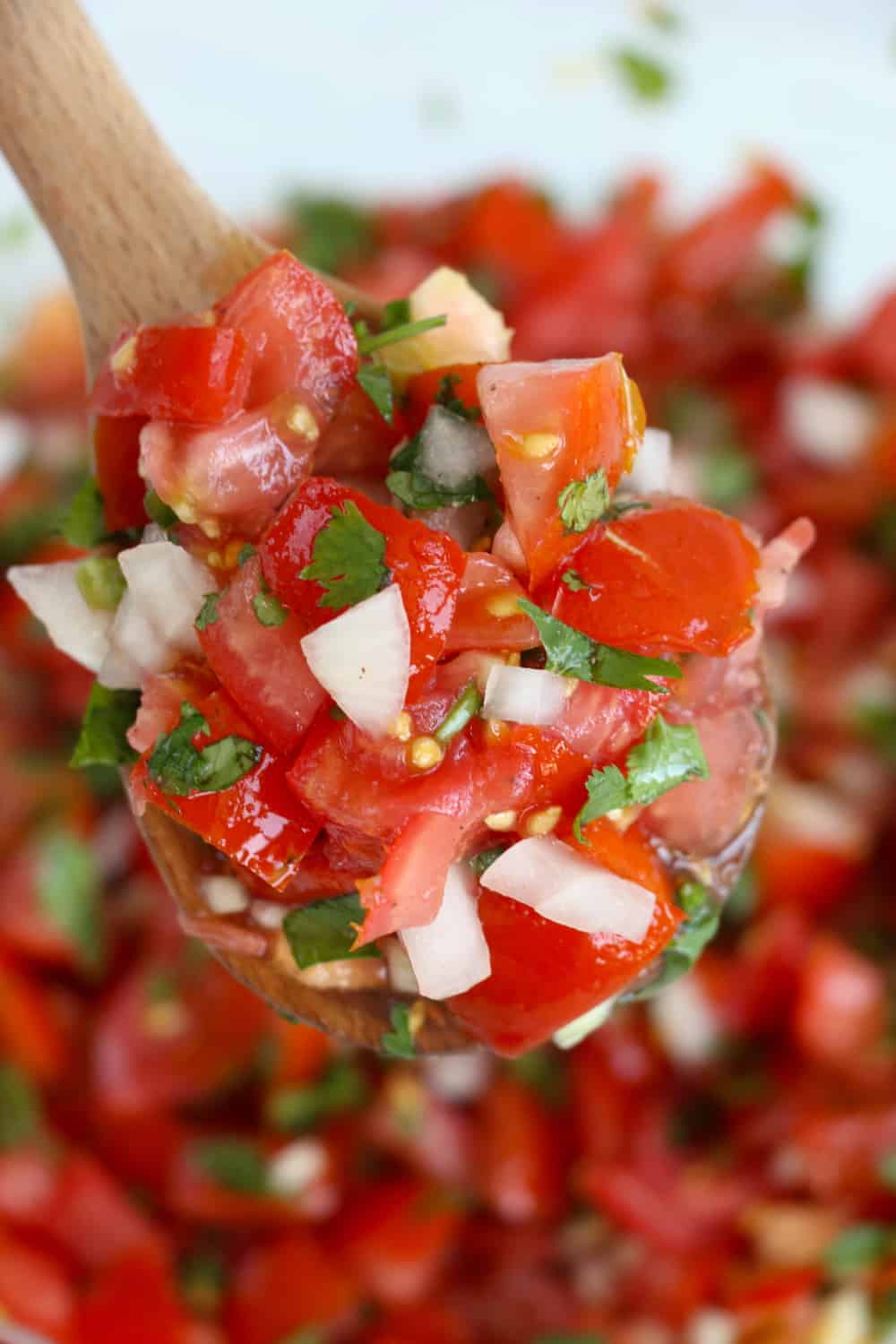Table of Content
Ladle hot salsa into hot jars, leaving 1/2 inch headspace. Center lid on jar and apply band, adjust to fingertip tight. Place jar in boiling water canner. Repeat until all jars are filled. By acidifying the tomatoes with vinegar, you can safely can this salsa recipe in a water bath canner.

Now fill the canner with enough water to reach the top of the jars. Put your canner on the stove and put the jars you are going to use into it. Fill all the jars with water all the way to the top. After at least 12 hours you can can test your seals. Press the center of the lid to make sure it is concave, then remove the band and (gently!) try to lift the lid off with your fingertips.
How Do I Make a Smooth Salsa?
Won't know about the canned stuff till later. You'll also want to either have your trash can handy, or another bowl to use as a trash bowl - this will make getting rid of the skins easier. Boil on low for 10 minutes, watching carefully so that nothing sticks to the bottom of the pot.

Turn your windfall of tomatoes into salsa! We'll teach you everything about canning salsa, plus share our family favorite zesty salsa recipe for canning. If your garden has blessed you with a surplus of tomatoes this summer, you've found the right recipe.
Fresh Homemade Salsa
Once again, the combination of time and temperature destroys bacteria and creates a tight vacuum seal, so food stays fresh longer. This form of canning uses high temperatures to safely preserve foods that are low in acid such as meat, poultry, vegetables, chili, and seafood. The ones I used in this post are made by Ball, which has been making the most popular jars for canning since 1880. Once you’ve removed them from the water with the tongs and set aside onto a flat surface. Leave the jars undisturbed for 12 to 24 hours. Gently tap the bottom of the jar on a flat surface to remove any air bubbles; this will keep the salsa from spoiling due to trapped air.

Prepare your canner, jars, and lids, as we talk about in our intro to canning post. With how much salsa we plow through in a year, it’s a good thing that canning salsa is stupendously easy to do. Before the end of summer, I like to have at least three dozen pints of my go-to salsa stashed away in our pantry. Canning salsa is a wonderful beginner canning project, and we’re going to show you everything you need to know to have your own stockpile of salsa. After you've eaten your salsa, the jars and bands can be reused in future canning projects. However, you should never reuse lids - always purchase new lids to ensure a proper seal.
How to Can: Homemade Salsa
The best substitute for lime juice in salsa is lemon juice. Lemon juice is very similar to lime juice, save for the fact that it lemons are slightly sweeter, while limes are slightly more bitter. Making homemade salsa is a great way to use up the fresh produce from your garden. Pour salsa in large pot and bring to a boil. Reduce the heat, stir and simmer for 10 minutes.
I did one batch chopping everything by hand and one roughly chopping using the food processor and they results were really similar. If you want your salsa to have more texture, then I recommend chopping the tomatoes by hand and using the food processor for everything else. Improperly canned salsas can cause botulism poisoning. Botulism comes from dangerous toxins that are produced when Clostridium botulinum spores grow in low acid foods.
Popular Posts
Most salsa recipes are a mixture of low-acid foods like onions and peppers, and acid foods such as tomatoes or fruit. It's recommended to follow a USDA tested recipe if you'd like to preserve salsa rather than experiment with your own homemade recipe. The proportions of the tomatoes, peppers, herbs and other vegetables will determine which method of canning should be used. If the final pH of the salsa is less than 4.6, then the boiling water canning method can be used.
Add onions and garlic; cook, stirring occasionally, until onions just turn translucent, 5 to 6 minutes. Add tomatoes , poblanos, vinegar, sugar, cumin, and cayenne. Reduce heat to medium; simmer, stirring often, until mixture has thickened and little to no liquid pools on the surface, 10 to 12 minutes. Remove from heat; stir in cilantro, jalapeños, and remaining 1 tablespoon salt.
I’m writing this recipe as one to be canned, but you don’t need to. It will make a lot of salsa but you could also pour it into jars and gift it to friends without canning. However– don’t be intimidated by the canning process. It couldn’t be simpler and you don’t need any fancy equipment to do it. Mix tomatoes, garlic, lime juice, salt, and cumin and bring to a boil. Put clean tomatoes in boiling water for seconds, and then plunge them into ice water.
Make sure the mixture is very smooth- you dont want any corn starch chunks in your salsa. If you make this recipe, come back to rate it and leave a comment. Seeing you make my recipes makes my day!
Run a clean knife or thin spatula around the insides of the jars to remove any air bubbles. Wipe the rims with a moist paper towel to remove any residue. Top with lids and screw rings on tightly.

Use a bubble popper or a thin knife to remove any air bubbles and top off the jar if necessary. Again making sure to leave 1/2 inch headspace. For the half and half salsa, puree the stuff in the pot and then add in the diced stuff you put aside earlier. You need to also get your lids ready to go following your manufacture’s instructions. I usually toss the lids and rings into a pan with water to cover and put it on the back burner.

No comments:
Post a Comment